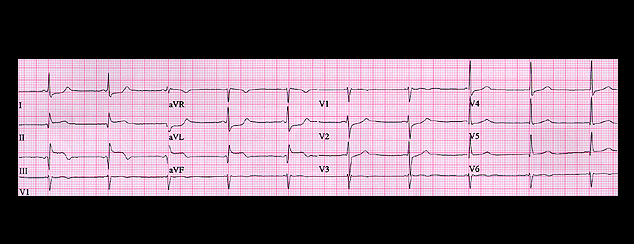
The tracing shown here is from a 54 year old female who presented to the Emergency Department with chest pain and a blood pressure of 90/60. Her ECG shows rather obvious changes of an acute inferior wall infarction. But what else does it suggest? What is the rhythm and where would you place the lesion causing the infarction?
